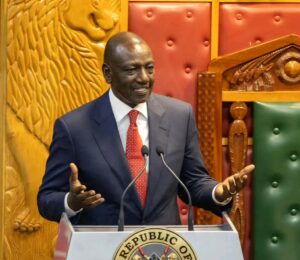What You Should Know About Climate Change

According to the United Nations, climate change refers to long-term shifts in temperatures and weather patterns. Such shifts can be natural but in the recent years, human activities have been the main driver of climate change.
Climate change has and continues to affect different sectors in Kenya, education being one of them. These effects have been experienced directly or indirectly, with different regions being affected differently.
First, climate change has led to migration and displacement of people from their homes. Floods, for example, have displaced many people from their homes. While the displaced pupils try to quench their thirst for education, they have ended up putting pressure on existing infrastructure and the limited resources available in the new areas of settlement.
As a result of the changing climatic conditions, stakeholders in education sector are forced to review the curriculum, and incorporate topics that are climate related. This will educate and create awareness among learners on the climate issues and the general impact on their environment. It will also help them become participators in climate action.
In addition, climate change has disrupted school activities and in extreme cases led to temporary closure of learning institutions. When heavy rains fall, roads become impassable and crossing bridges overflood or break. In such cases, learners in the affected areas lag behind with syllabus completion. Various school programs whether academic or extra-curricular, have to be put on hold due to such conditions.
Climate change also poses a risk to the general health of learners and the staff. In the case of extreme temperatures, diseases could result and when learners and staff are unwell, they stay away from school. Absenteeism affects the general performance of learners. Those who make it to school while unwell are likely to have lower concentration levels. When the staff are unwell, it affects their productivity and efficiency at work.
Climate change affects learners both emotionally and psychologically. For example, during the dry season, some people have to walk kilometers away to fetch water. A learner who is expected to go fetch water after school may have a hard time concentrating in class. The mind veers off as they think of how they will get home and go fetch water. Such situations stress learners but they have to go through it all.
Climate change affects allocation of resources in the education sector. Areas that are at risk of experiencing adverse climatic conditions have to get extra funding to take care of unpredicted occurrences such as drought and floods. With Kenya being a third world country, it is forced to continue borrowing loans to sort climate related issues.
More challenges continue to unravel in the education sector as weather patterns continue to change. To mitigate such challenges Kenya, Africa and the entire world needs to participate in climate action.
By Mary Wamboi








